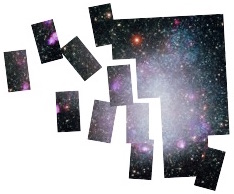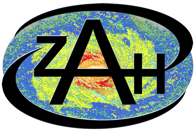My Research: Stellar Populations and Galaxy Evolution

Introduction
Our work focuses on understanding how galaxies formed and evolve over a Hubble time. We use resolved stellar populations as fossils of a galaxy's past evolution, conducting galactic archaeology with these witnesses of former epochs. Individual star clusters, nearby dwarf galaxies, and massive galaxies like the Milky Way are our primary research foci. We utilize HII regions, planetary nebulae, star clusters, variable stars, and other stellar populations in order to explore galactic star formation histories, to trace spatial and temporal variations within a galaxy, to provide a fossil record of the chemical and dynamical evolution of different galactic components, and to reveal the accretion histories of galaxies. Moreover, we seek to understand what governs these processes. The properties of galaxies in groups and clusters help us to constrain their assembly histories, the origin of different galaxy types, and drivers of galaxy evolution such as environment. This work has led to more than 400 refereed publications and has been cited more than 63,000 times, resulting in a Hirsch index of 102.Large international surveys such as the Sloan Digital Sky Survey (SDSS), the Radial Velocity Experiment (RAVE), the Panoramic Survey Telescope and Rapid Response System (Pan-STARRS), the Gaia-ESO Survey (GES), the Large Sky Area Multi-Object Fibre Spectroscopic Telescope (LAMOST), the HST Legacy Extragalactic UV Survey (LEGUS), and the cornerstone mission Gaia of the European Space Agency (ESA) provide a substantial amount of our observational data, complemented by surveys or by follow-up observations with the Hubble Space Telescope (HST) and ground-based telescopes. We are partners in future spectroscopy initiatives like the 4-metre Multi-Object Spectroscopic Telescope (4MOST) and the Multi-Object Spectrograph for Astrophysics, IGM, and Cosmology (MOSAIC) for the European Extremely Large Telescope (E-ELT). We also participate in the Sloan Digital Sky Survey V (SDSS-V) and in the Rubin Observatory/LSST.

Topics
Star Clusters- Star Formation and Young Star Clusters in the Milky Way and Magellanic Clouds
- 1.1 The Stellar Initial Mass Function (IMF) and Mass Segregation
- 1.2 Effects of Massive Star Formation on Low-Mass and Sequential Star Formation
- 1.3 Emission-line Stars in Young Clusters
- 1.4 Age Spreads
- 1.5 Binary and Multiple Star Clusters
- Galactic Globular Clusters
- 2.1 Abundance Inhomogeneities and Multiple Stellar Populations
- 2.2 Dissolution of Globular Clusters
- 2.3 The Globular Cluster Contribution to Halo Field Stars
- 2.4 Testing Fundamental Physics with Globular Clusters
- Star Cluster Systems
- Dwarf Spheroidal Galaxies
- Irregular Galaxies
- Dwarf Galaxies in Groups and Clusters
- The Milky Way
- Disk Galaxies
